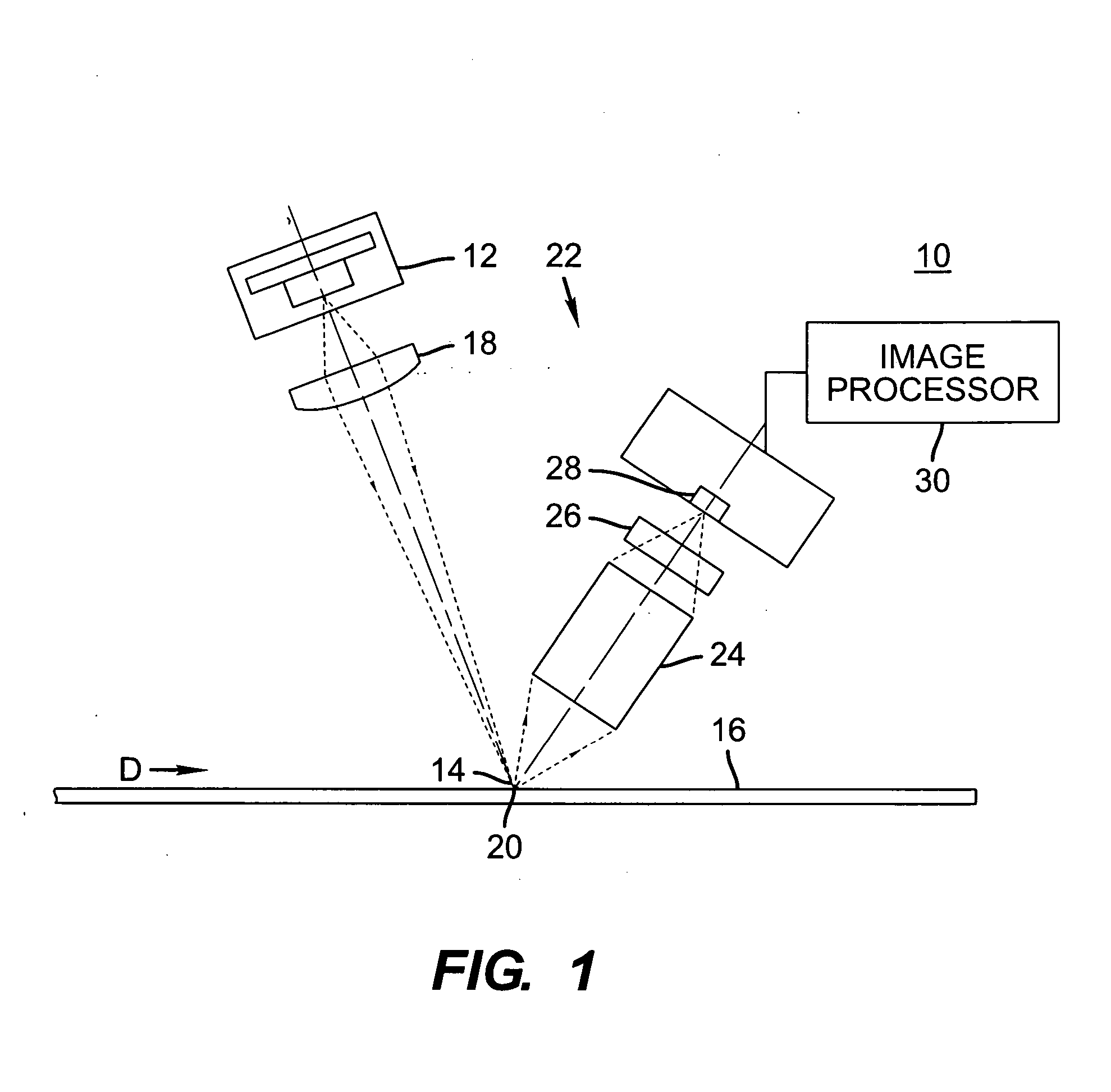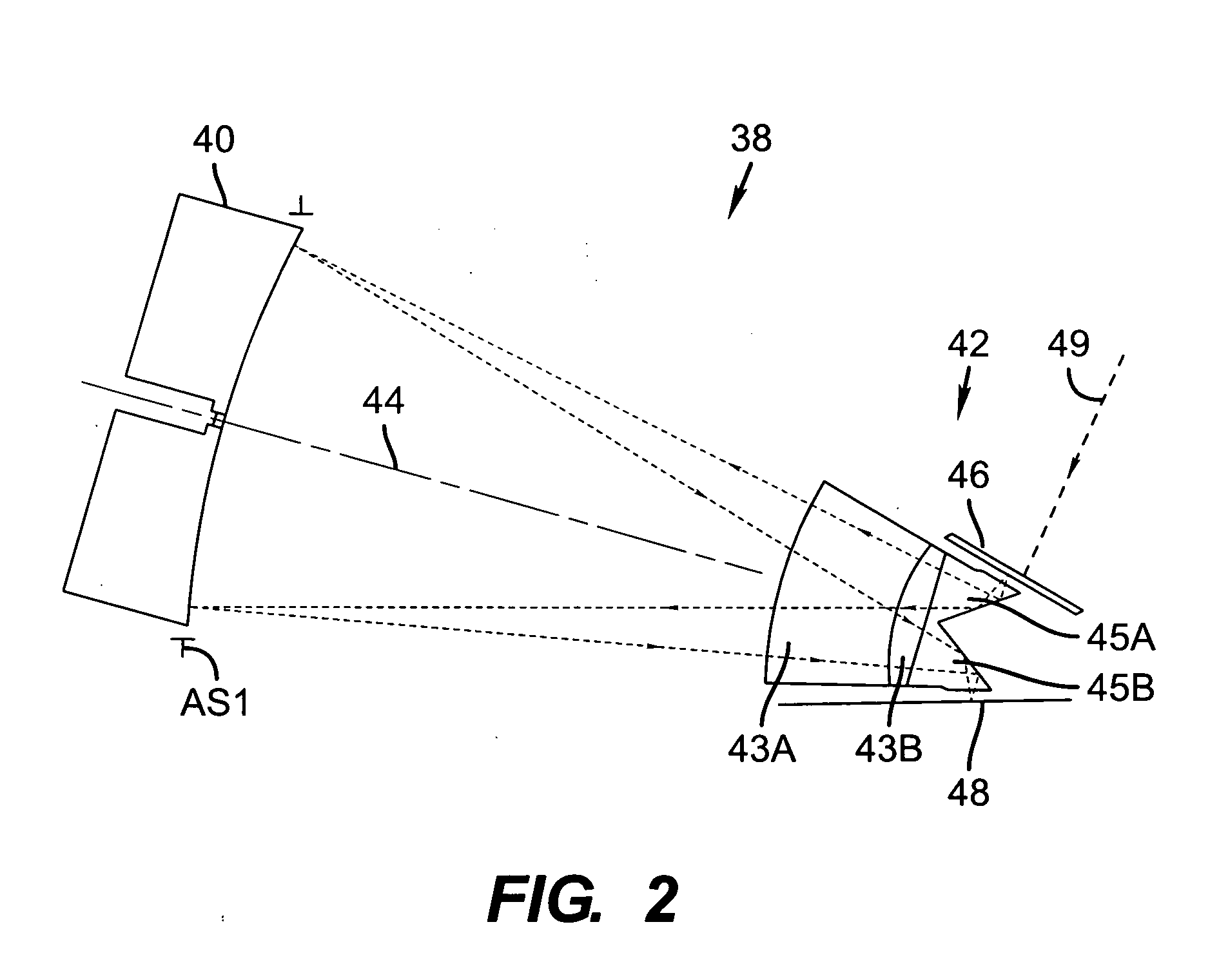Radiation image readout apparatus
- Summary
- Abstract
- Description
- Claims
- Application Information
AI Technical Summary
Benefits of technology
Problems solved by technology
Method used
Image
Examples
Embodiment Construction
[0033] Referring now to the Figures, there are shown preferred embodiments of the present invention. As shown in FIGS. 3 and 4, there is shown a stimulable phosphor radiation readout apparatus according to one embodiment of the present invention. Readout apparatus 100 includes, a concave spherical mirror 70, a refractive lens assembly including a doublet lens 64, and an optical assembly including prisms 66 and 68, optical plate 58, and color filter 62, and dichroic prism 52. Mirror 70, lens 64, prisms 66 and 68 are symmetrical about central axis 76 which defines a central plane. Dichroic prism 52 has a cutoff wavelength and reflects radiation of a first wavelength above the cutoff wavelength, and passes radiation of a second wavelength below the cutoff wavelength. A line of stimulating radiation of a first wavelength from a stimulating radiation source is projected along path 72 into dichroic prism 52 which reflects the stimulating radiation to stimulable phosphor 50 located at stim...
PUM
 Login to view more
Login to view more Abstract
Description
Claims
Application Information
 Login to view more
Login to view more - R&D Engineer
- R&D Manager
- IP Professional
- Industry Leading Data Capabilities
- Powerful AI technology
- Patent DNA Extraction
Browse by: Latest US Patents, China's latest patents, Technical Efficacy Thesaurus, Application Domain, Technology Topic.
© 2024 PatSnap. All rights reserved.Legal|Privacy policy|Modern Slavery Act Transparency Statement|Sitemap



